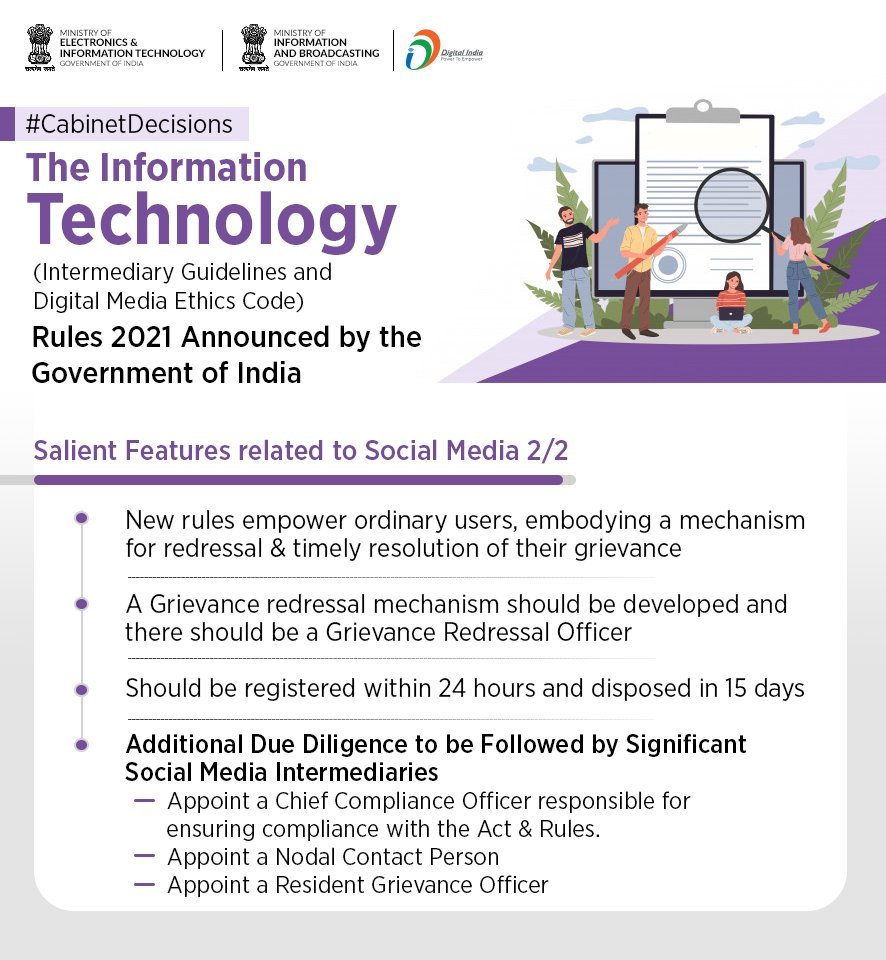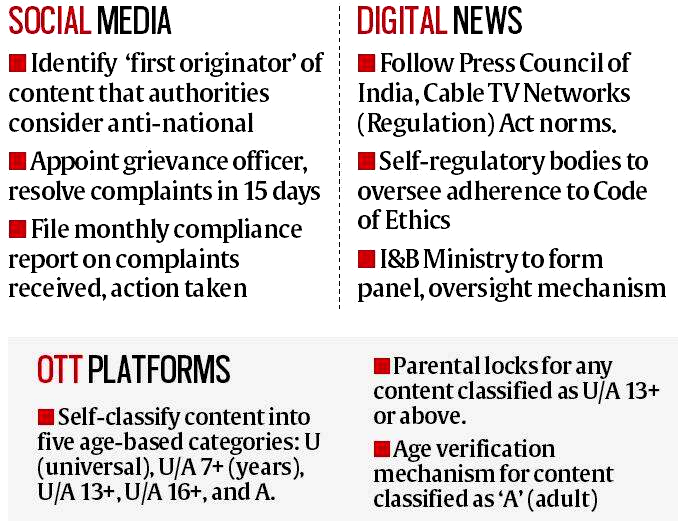22 Apr 2023 NEW IT RULES
NEW IT RULES
This article covers “Daily Current Affairs” and the topic details “New IT Rules”. The topic “New IT Rules” has relevance in the Governance section for the UPSC CSE exam.
Relevance of IT Rules
For Prelims:
What are the new IT rules?
For Mains:
GS 2: Governance
What is the significance of New IT rules?
What are the issues related to the New IT Rules?
Why in the news?
The Indian government has recently implemented a new amendment to the Information Technology (Intermediary Guidelines and Digital Media Ethics Code) Rules, 2021, or IT Rules, which grants the Ministry of Electronics and Information Technology (MeitY) the authority to establish a “fact check unit” with the aim of identifying and combating false or misleading online content.
What are Information Technology (Intermediary Guidelines and Digital Media Ethics Code) Rules, 2021?


What are the new IT rules?

The new regulations introduced in April 2023 have granted the Indian government sweeping powers to censor content on social media platforms that it deems fake or false, raising concerns about freedom of speech and civil liberties in the country.
These regulations are an amendment to the Information Technology (Intermediary Guidelines and Digital Media Ethics Code) Rules, 2021, which were already in place to regulate intermediaries and digital news media.
- First Originator: Social media platforms are required to provide technological solutions to identify the first originator of any information, which risks compromising privacy.
- Fact Check Unit: The Fact Check Unit, which has been given unlimited power to decide what information is false, can now compel intermediaries to remove posts deemed fake or false.
What are the concerns related to the amendments made?
The recent amendment to the Information Technology (Intermediary Guidelines and Digital Media Ethics Code) Rules, 2021, has raised concerns due to several reasons.
- The new regulations potentially violate the Supreme Court’s judgement in the Shreya Singhal vs Union of India (2015) case, which held that a law that limits speech cannot be vague or overbroad.
- The new regulations lack clear definitions for fake news, which gives the government’s fact-check unit unchecked power to determine what content people can access online.
- The lack of definition of terms such as “any business” leaves it open to the government’s interpretation, which raises concerns about censorship and potential misuse of power.
- The new regulation does not follow the standard practice of enacting comprehensive parliamentary legislation on fake news, grounded in Article 19(2) of the Indian Constitution.
- The new regulations provide that the intermediaries are now required to remove information deemed false by the Fact Check Unit, which leaves only the state to determine what is true.
- This grants the government the power to exercise censorship and decide what information is bogus, which can curtail civil liberties and restrict the press and individuals’ right to question authority.
Revised:
What is the Way Forward?
Moving forward, there are several approaches that can be taken to address the problem of misinformation and fake news. Rather than relying solely on censorship, a multi-pronged approach involving technology solutions, self-regulation, public awareness, and collaboration between stakeholders can be adopted.
- Investment in technology: One potential solution is to invest in technology to identify false information. This can involve developing processes that are capable of detecting fake news.
- Self-Regulation: Social media platforms can also adopt self-regulatory measures to prevent the spread of misinformation.
- Awareness generation: There is a need to create awareness among the public about the dangers of misinformation and the importance of free speech is crucial.
- Multi-stakeholder approach: There is a need to involve government, intermediaries, and civil society organisations to effectively tackle misinformation.


No Comments